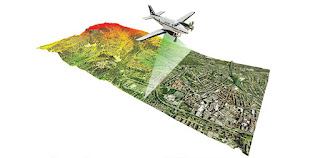The global Home Automation Market is expected to reach USD 39.88 billion by 2024, driven by rising
necessity of consumers for protection against fire and break-ins. Availability
of automated systems that can be operated over high-speed Wi-Fi, powerful smart
phone ubiquitous, and growing popularity of Internet-connectable gadgets is
expected to drive market growth. Moreover, reduced energy consumption and
availability of a broad range of products is anticipated to boost the home
automation market.
North America was the largest
market accounting for 35.7% of the share in 2016, owing to the adoption of the
technology and availability of affordable solutions is expected to augment
market growth. Europe is expected to witness sluggish growth over the forecast
period on account of market saturation. Factors such as awareness towards
security & safety of property, particularly in countries such as Germany,
UK and France, is expected to drive the market over the forecast period. Asia
Pacific, Central & South America, and the Middle East are expected to lead
the global home automation market in the next few years.
Browse Details of Report @ https://www.hexaresearch.com/research-report/home-automation-market
Wireless systems were extensively
used and are expected to witness a growth at an 11.7% CAGR on account of shift
of consumers to a hands-free method of operation. Computing network is
anticipated to achieve substantial growth in future owing to the availability
of wearable computing devices and high-speed internet connectivity.
Safety & security was the
largest contributor and is expected to witness the fastest growth on account of
advancement of technology such as biometric enabled lock system, camera feeds,
and alarm systems which prevent theft and burglary. Mainstream automation
systems are expected to witness significant growth in upcoming years on account
of its ability to integrate all smart electronic appliances to form one
intelligent system which can be accessible by the user.
Custom automation systems are
anticipated to grow on account of its ability to provide features which suit
the personal requirement of the customer. Moreover, these systems are available
over a broad price range, thus, providing a consumer with the option of picking
and choosing functions that suit their homes.
Hexa Research has segmented the
global home automation market based on technology, application, type and
region:
Segmentation by networking technology, 2014 - 2024 (USD Million)
• Wired systems
• Power-line systems
• Computing networks
• Wireless systems
Segmentation by application, 2014 - 2024 (USD Million)
• Lighting
• Safety & security
• HVAC
• Entertainment
• Energy management
• Others
Segmentation by type, 2014 - 2024 (USD Million)
• Custom Automation
• Mainstream Automation System
• Do-It-Yourself (DIY)
• Managed Home Automation
Segmentation by region, 2014 - 2024 (USD Million)
• North America
• U.S.
• Europe
• Germany
• UK
• Asia Pacific
• China
• Central & South America
• Brazil
• MEA
Key players analyzed
• Siemens AG
• ABB
• Honeywell
• Crestron Electronics, Inc.
• Schneider Electric
• Johnson Controls, Inc.
• Control4 Corporation
• Ingersoll-Rand PLC
• Legrand
• Leviton Manufacturing Company, Inc.
Browse Related Category Market Reports @ https://www.hexaresearch.com/research-category/technology-industry
About Us:
Hexa Research is a market research and
consulting organization, offering industry reports, custom research and
consulting services to a host of key industries across the globe. We offer
comprehensive business intelligence in the form of industry reports which help
our clients obtain clarity about their business environment and enable them to
undertake strategic growth initiatives.
Contact Us:
Ryan
Shaw
Hexa
Research
Felton
Office Plaza
6265
Highway 9
Felton,
California 95018
United
States
Phone:
+1-800-489-3075
Email: sales@hexaresearch.com
Website - http://www.hexaresearch.com/





